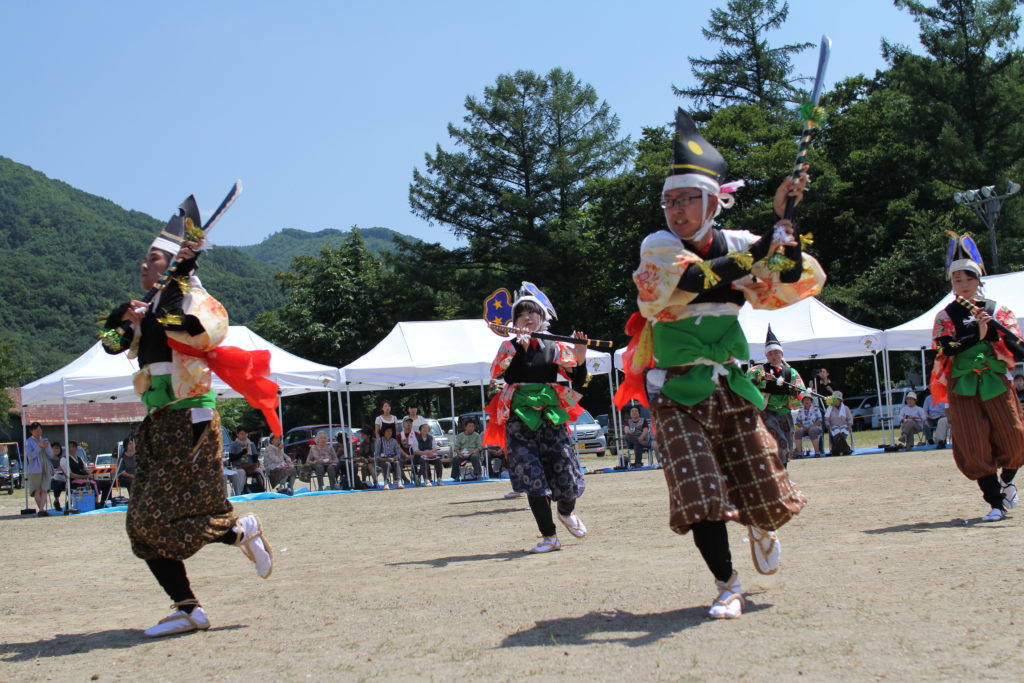中島七ツ舞
なかしまななつまい
Nakashima Nanatsumai
団体名 : 中島七ツ舞保存会
所在地 : 岩手県岩泉町
種別 : 踊り(三陸国際芸術祭過去出演団体)
三陸国際芸術祭出演 : 2019秋 岩泉プログラム
中島七ツ舞は、神楽の一つで神代の初め諸々の神々が、高まが原に下りし時七つの道具を持ち、悪魔を払い谷地を払い清めながら進んだのが中島七ツ舞の初めとされ、約190~200年以前(文化文政)の頃から伝えられる。舞は先打・谷地払・なぎなた・太刀・きね・弓の順に並んで悪魔を払い進み行く先を定め、谷地払いは左右の木の枝草などを払い、なぎなたは木立、太刀は前方左右のけものを払い、きねは道をかためながら進み、小鳥は弓をもって天からの悪魔を射、扇をもって舞いながら進む。舞の種類は、道具取り舞・横ばね舞、鳥居がかり舞、ちらし舞、組ちらし舞、道具おさめ舞の6つの舞に分かれて構成される。
Nakashima Nanatsumai is a form of kagura that began during the age of gods, when the gods descended to Takamagahara with seven tools and danced to dispel the demons and purify the land. This has been told since about 190-200 years ago, during the Bunka and Bunsei eras (between 1804 to 1830). The dance is currently done with roles in a particular order: sakidachi, yachi barai, naginata, tachi, kine, and finally, yumi. The sakidachi role dispels the demons and determines where to go, the yachi barai mows the branches left and right, the naginata mows larger trees and groves, the tachi dispels the surrounding beasts, the kine moves forward by hardening the soil, and finally, the kotori role uses a yumi (bow) to shoot demons that came from up above, and uses a fan to move forward as it dances. There are six types of dances: do-gu tori mai (tool-picking dance), yoko-bane mai (side leap dance), torii-gakari mai (gateway dance), chirashi mai (fierce scatter dance), kumi-chirashi mai (paired chirashi mai), and do-gu osame mai (tool-settling dance).
【Movie】
